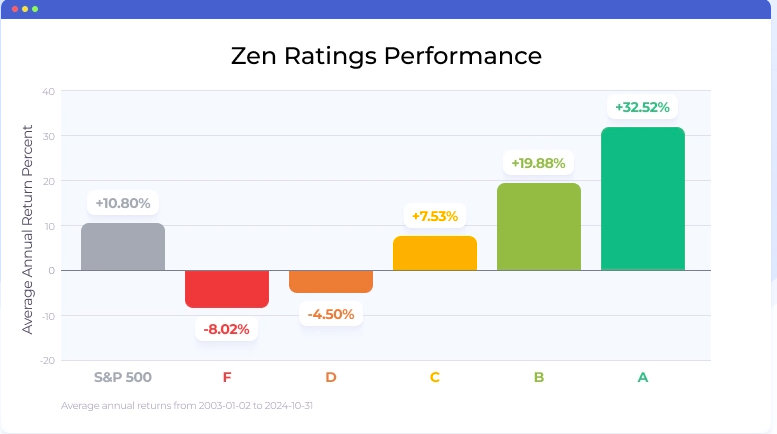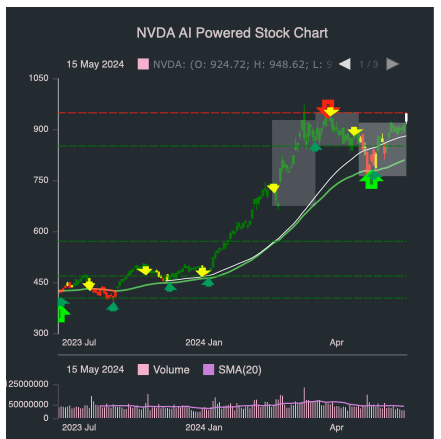20 Good Advice On Deciding On AI Stock Predictions Analysis Websites
20 Good Advice On Deciding On AI Stock Predictions Analysis Websites
Blog Article
Top 10 Ways To Evaluate The Privacy And Security Of Ai Stock Trading Platforms
When using AI-based trading platforms to forecast and analyze prices of stocks privacy and security are essential. These platforms often deal with sensitive personal and financial information. In the event of a data breach or misuse, it could lead to financial and reputational loss. Here are the top 10 suggestions to assess the security and privacy of these platforms
1. Check Data Encryption
Secure transmission of data: Ensure that your platform is using encryption protocols that are secure, like TLS/SSL to encrypt any data exchanged between the servers on your device and the server of the other.
Encryption of sensitive data at rest: Check the security of sensitive data on the platform's server using high-quality encryption standards (e.g. AES-256).
End-to-end encryption: Determine if your platform provides encryption from beginning to finish for data and communications that are considered to be sensitive.
2. Examine Authentication Measures
Two-factor authenticaiton (copyright): Make sure that your platform supports this to add an extra layer of security.
Biometric authentication: Find out whether the platform supports biometric login methods (e.g. fingerprints or facial recognition) for mobile apps.
Password policy: Verify if the platform enforces strict password policies (e.g. minimum length or complexity requirements).
3. Examine for Regulatory Compliance
Financial regulations: Make sure your platform complies all relevant financial laws (e.g. SEC FINRA MiFID II).
Laws on data protection: Verify compliance with data privacy laws (e.g., GDPR, CCPA) if you are operating in or trading with areas that are covered by these laws.
Audit certifications: Determine that your platform has been subjected to third-party audits or certifications.
4. Review the Data Access Controls
Role-based access: Apply role-based accessibility controls to limit access to information to authentic users.
Permission levels: Check to see if the different users or members of a team have different permissions.
Activity monitoring. Check whether your application is monitoring and tracking the user's activities.
5. Assess Vulnerability management
Regular updates: Ensure that your platform is updated regularly its software in order to patch security holes.
Penetration test: Make sure that your system is tested regularly to identify and correct any security weaknesses.
Bug bounty programs: Check whether there is a bug bounty program that is available to motivate security researchers from other sources to report vulnerabilities.
6. Evaluate Data Privacy Policies
Transparency: Read the privacy policies of the platform in order to understand the ways in which data is gathered, shared and utilized.
Data minimization is the process to ensure that only the information necessary for operation are gathered by an application.
Third-party sharing : Review the platform's data sharing policies and conditions.
7. Secure API usage is monitored
API security: Ensure the platform's API utilizes secure authentication methods (e.g., OAuth, API keys) and also encrypts data exchanges.
Rate-limiting: Verify whether the API has a rate limit to avoid abuse and brute-force attacks.
Review the logs of access. Verify that the platform monitors API usage, and logs it for monitoring.
8. Examine the reaction to an incident and recovery
Incident response plan: Ensure your platform is equipped with an incident response plan for handling security breaches or data breaches.
Review the platform's policies to receive notifications.
Data backups - Check that the platform has a strategy for disaster recovery, and that it regularly backs data up.
9. Evaluation of Physical Security Measures
Data center security: Make sure the servers of your platform are located in data centers with physical security measures, such as access control and surveillance.
Redundancy: Ensure that there are redundant platforms running on the platform in order to ensure that data is available in the event of hardware failure.
Geographic distribution: To boost resilience, make sure that the data is distributed over several geographic locations.
10. Test user privacy controls
Data deletion - Ensure that you can delete your personal data permanently from the platform if you decide to stop using the platform's services.
Privacy settings: Check if there are privacy settings available that let you control the data shared and visible.
Verify the data's anonymity to ensure that it is not used for machine learning and analytics.
Bonus Tips
User reviews and reputation Review the feedback and reviews of users to understand the level of security and privacy a platform is.
Trial time: You can avail a demo or a free trial period to test the privacy and security controls.
Customer Support: Check that the platform has the capacity to provide a robust support in the event of security issues.
The following tips will help you assess the privacy and security features of AI software for predicting or analyzing trades. This will ensure that your personal and financial data is safe. A secure platform will not just protect your assets, but it will also increase confidence and trust in the products. View the most popular discover more here about ai stock trading for blog recommendations including best ai stock trading bot free, ai for investing, ai stock picker, ai trading, ai for stock trading, investment ai, ai investing app, ai investing platform, ai stock picker, ai investing platform and more.
Top 10 Tips For Assessing Regulatory Compliance With Ai Stock Predicting/Analyzing Trading Platforms
Regulation compliance is an important element to evaluate AI-based trading platforms. Compliance can help ensure that the platform is operating within the legal frameworks and safeguarding the privacy of users. These are the top 10 tips for assessing regulatory compliance.
1. Verify the Licensing & Registration
Regulators: Make sure your platform is registered with and regulated by the appropriate financial regulatory bodies (e.g., SEC in the U.S., FCA in the UK, ASIC in Australia).
Verify the broker collaboration If your platform has a partnership with brokers or brokers, be sure that these brokers are licensed and regulated.
Public records: Go to the website of the regulator to find the status of registration for the platform as well as any previous violations.
2. Take Data Privacy Measures Compliance
GDPR: Make sure that your website adheres to the General Data Protection Regulation.
CCPA – For Californian users be sure to check the compliance of California Consumer Privacy Act.
Data handling policy: Make sure you read the privacy policies to understand the way in which user data is stored and collected.
3. Examine Anti-Money Laundering (AML) Measures
AML policies: Ensure that your platform is equipped with a solid AML policy to detect and stop any form of money laundering.
KYC procedures - Ensure that the platform follows Know Your Customer procedures for authenticating user identities.
Monitor transactions: Determine if the platform monitors transactions for suspicious activity and if it reports it to the appropriate authorities.
4. Check for Compliance With Trading Regulations
Market manipulation: Check that the platform includes measures to protect against manipulation of the market, like spoofing or wash trading.
Types of orders. Verify that the platform is in compliance with all regulations regarding order type (e.g. there isn't any stop loss hunting that is illegal).
Best execution: Examine to determine if the platform is adhering to the best execution method which guarantees that trades are executed at the lowest possible price.
5. Cybersecurity compliance assessment
Data encryption - Ensure that the platform is using encryption to secure data either in transit or when it is at the rest.
Response to incidents. Verify whether the platform has a plan of action to handle cybersecurity breaches and data breaches.
Certifications: Make sure the platform has cybersecurity certifications (e.g., ISO 27001, SOC 2).
6. Transparency and Disclosure: A Review
Fee disclosure: Ensure that the platform has clearly disclosed all fees including hidden costs or other charges.
Risk disclosure: Ensure that the platform discloses all risks, particularly in the case of high-risk strategies or trading using leverage.
Performance reporting: Verify that the platform is honest and precise reports on the accuracy of its AI models.
7. Verify that you are in compliance with International Regulations
Trading cross-border: If you want to trade internationally, make sure the platform complies in all countries.
Tax reporting: Check the platform's tools or reports that allow users to comply with tax regulations.
Compliance with international sanctions: Make sure your platform is in strict compliance with these and doesn't allow trading between countries or entities that are banned.
8. Review Audit Trails and Record-Keeping
Transaction records: Verify that the platform keeps detailed records for regulatory purposes and for audit.
Logs of activity for users: Determine whether the platform records user activity, including trading, logins, as well as modifications to account settings.
Audit-readiness: Find out if the platform is equipped to provide all necessary documentation and logs for the possibility of a regulatory audit.
9. Assess Compliance with AI-specific Regulations
Algorithmic rules of trading: If the platform allows algorithmic trading, it has to conform to European regulations such as MiFID II and U.S. Reg SCI.
Fairness and bias: Check whether the platform monitors and corrects biases within its AI models to ensure ethical and fair trading.
Explainability: Some regulations require that AI platforms give explanations for AI-driven predictions or decisions.
Review User Feedback & Review History of Regulatory History
User reviews: Read the feedback of users and compare it to the platform's regulatory standards.
Historical Record: Search for any past violations of regulations and penalties, fines or sanctions.
Third-party inspections: Check if the platform is subjected regularly to third-party inspections by a third party in order to ensure compliance.
Bonus Tips
Legal consultation: Talk to a lawyer to ensure that the platform complies with the relevant laws.
Trial period: Test the platform for free, or use the demo to check the compliance features and the documentation.
Customer support: Check that the platform offers support to customers with issues or concerns relating to compliance.
Use these guidelines to assess the regulatory compliance and protection of your interests. Compliance not only minimizes legal risks, but also increases confidence and trust in the services of the platform. View the best read what he said for ai stock price prediction for blog examples including best ai stocks, trading ai tool, ai options, ai stock investing, stock trading ai, ai trading tool, ai in stock market, ai for trading stocks, ai share trading, ai options trading and more.